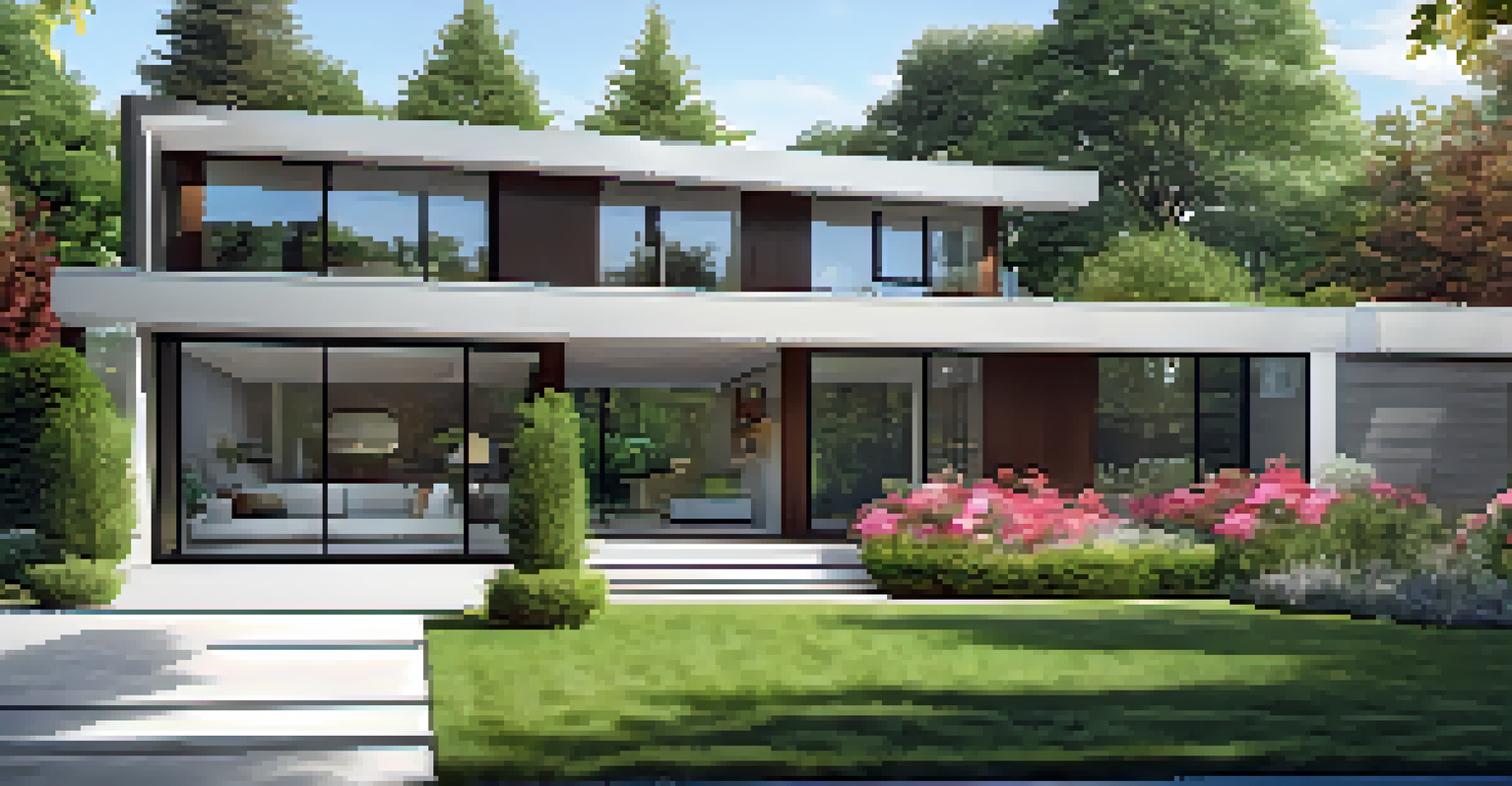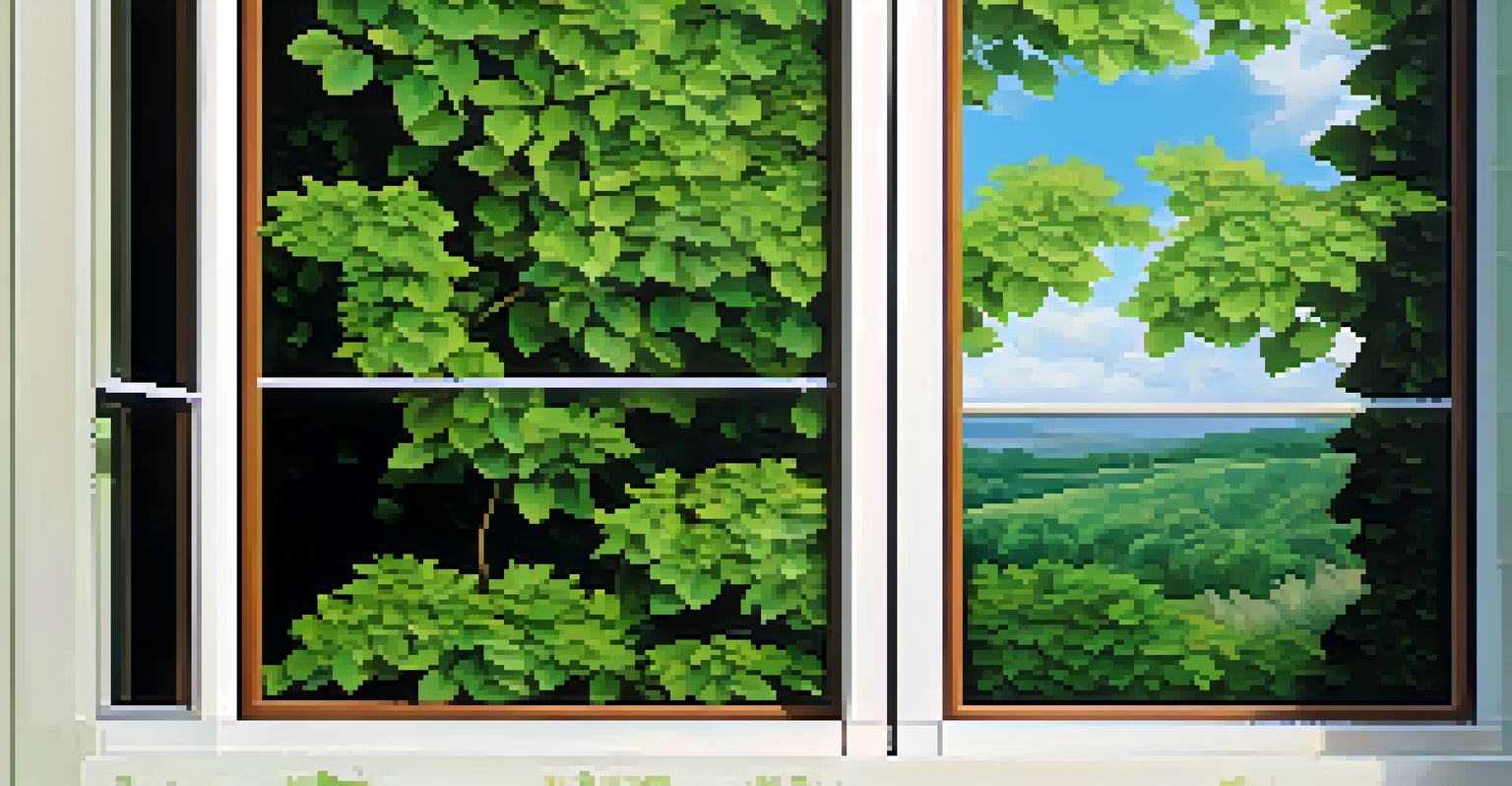Designing Homes with Energy-Efficient Windows

Understanding Energy-Efficient Windows: What Are They?
Energy-efficient windows are designed to minimize energy loss, keeping your home comfortable year-round. They typically feature advanced glazing options, which reflect heat and reduce glare while still allowing natural light in. Think of them as a cozy blanket for your home, helping to maintain the ideal temperature without overworking your heating or cooling systems.
The greatest threat to our planet is the belief that someone else will save it.
These windows are often double or triple-paned, filled with insulating gases like argon or krypton, and have low-emissivity (Low-E) coatings. This combination not only enhances thermal performance but also blocks harmful UV rays, protecting your furniture and flooring from fading. By understanding these features, homeowners can make informed choices that positively impact their energy bills and comfort levels.
Investing in energy-efficient windows is more than just a trend; it's a step toward sustainable living. As we become more aware of our environmental footprint, these windows represent a practical solution for reducing energy consumption while enhancing the aesthetics of our homes.
Benefits of Energy-Efficient Windows for Homeowners
One of the most appealing benefits of energy-efficient windows is the potential for significant savings on energy bills. By minimizing heat loss in winter and keeping heat out in summer, homeowners can enjoy lower heating and cooling costs. This not only saves money but also contributes to a more eco-friendly lifestyle.

Moreover, energy-efficient windows enhance the overall comfort of your living space. With better insulation, you’ll notice fewer drafts and more consistent indoor temperatures. Imagine curling up with a book in a cozy, draft-free corner of your home, no matter the season outside.
Energy Savings with Smart Windows
Energy-efficient windows can significantly reduce heating and cooling costs, offering homeowners a pathway to lower energy bills.
Finally, these windows can increase the value of your home. When prospective buyers see energy-efficient features, they often consider them a major selling point. It's like having a cherry on top of your home’s appeal, making it more attractive in a competitive real estate market.
Choosing the Right Type of Energy-Efficient Windows
When selecting energy-efficient windows, it's essential to consider the materials used. Common options include vinyl, wood, and fiberglass, each offering distinct advantages and aesthetics. For instance, vinyl is low-maintenance and cost-effective, while wood provides a classic look with excellent insulation properties.
Energy efficiency is not just a cost-saving measure; it’s an essential component of sustainable living.
You should also pay attention to the window's energy performance ratings, such as the U-factor and Solar Heat Gain Coefficient (SHGC). The U-factor measures how well a window prevents heat from escaping, while the SHGC indicates how much solar heat it allows in. Choosing windows with lower U-factor and SHGC values will enhance your home’s energy efficiency.
Lastly, think about the style and design of your windows. Whether you prefer sleek modern lines or traditional frames, energy-efficient windows come in various designs that can complement your home's architecture. It's important to find a balance between aesthetic appeal and energy performance.
The Role of Installation in Window Efficiency
Even the best energy-efficient windows can underperform if not installed correctly. Proper installation ensures that there are no air leaks and that the windows fit snugly within the frame. Think of it like building a puzzle; every piece needs to fit perfectly for the whole picture to come together.
Hiring a professional installer who understands the nuances of energy-efficient windows is crucial. They can assess your home’s specific needs and recommend the best installation techniques to maximize energy savings. Plus, a professional can spot potential issues that might affect performance, ensuring your investment pays off.
Sustainable Living Benefits
Installing energy-efficient windows not only enhances home comfort but also contributes to a more sustainable environment by reducing energy consumption.
Don’t forget to consider the importance of maintenance as well. Regular checks and upkeep can prolong the life of your windows and maintain their efficiency. Simple tasks like cleaning the frames and seals can prevent minor issues from turning into costly repairs down the line.
Energy-Efficient Windows and Natural Lighting
While energy-efficient windows excel at insulation, they also play a vital role in maximizing natural light in your home. Strategically placed windows can brighten your living space without the need for excessive artificial lighting. This not only creates a warm and inviting atmosphere but also reduces electricity consumption.
Low-E coatings on energy-efficient windows allow for ample daylight while filtering out harmful UV rays. This means you can enjoy the sun's warmth without worrying about damaging your interiors. Imagine a sunlit living room filled with natural light, which not only elevates your mood but also lessens the need for artificial lighting.
By incorporating energy-efficient windows that prioritize natural light, you’re enhancing both the beauty and functionality of your home. It’s a perfect blend of style and sustainability, creating an environment that feels spacious and inviting while being energy-conscious.
Cost Considerations: Investment vs. Savings
When considering energy-efficient windows, it’s essential to weigh the initial investment against long-term savings. Although these windows can be more expensive upfront, they typically pay off over time through reduced energy costs. It’s similar to investing in a quality pair of shoes; the initial cost may be higher, but the comfort and longevity make it worthwhile.
Many homeowners are surprised to find that energy-efficient windows can lead to an average savings of 15-25% on energy bills. This means that over the years, the money saved can offset the initial purchase price, making it a smart financial decision. The key is to think of this as an investment in both your home and your wallet.
Proper Installation Matters
Even the best energy-efficient windows require correct installation to maximize their performance and efficiency.
Additionally, various local and federal incentives may be available to help ease the financial burden of upgrading to energy-efficient windows. Researching these options can further enhance the value of your investment, making the transition to energy efficiency even more appealing.
Sustainability and Energy-Efficient Windows: A Perfect Match
Energy-efficient windows are not just a smart choice for homeowners; they also contribute to a more sustainable future. By reducing energy consumption, we decrease greenhouse gas emissions associated with heating and cooling our homes. It’s like planting a tree for every window you install—each one helps the planet breathe a little easier.
Moreover, many manufacturers of energy-efficient windows are now focused on sustainable production practices. This means that not only are you choosing a product that saves energy, but you’re also supporting companies that prioritize the environment. It’s a win-win situation where your home improvement efforts align with global sustainability goals.

Adopting energy-efficient windows is a step toward a more environmentally conscious lifestyle. By making informed choices and encouraging others to do the same, we can collectively contribute to a healthier planet for future generations, ensuring that our homes and earth thrive together.